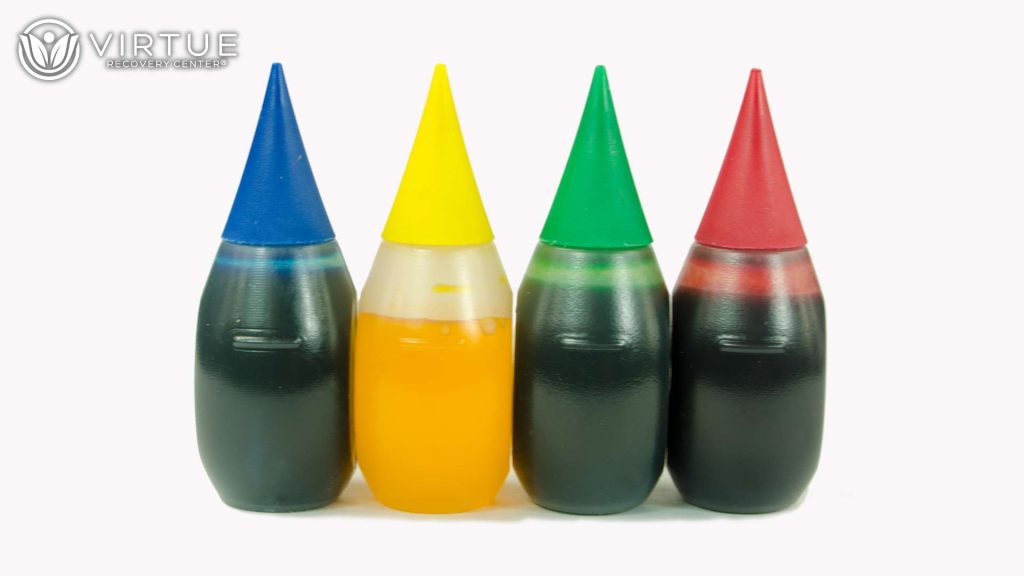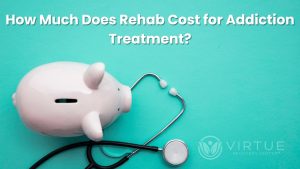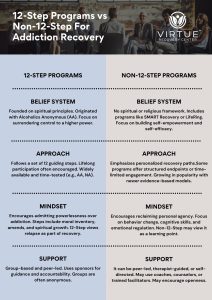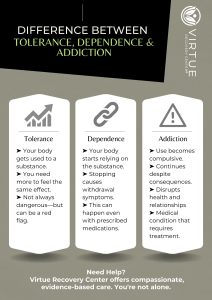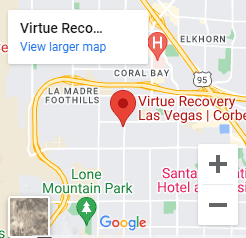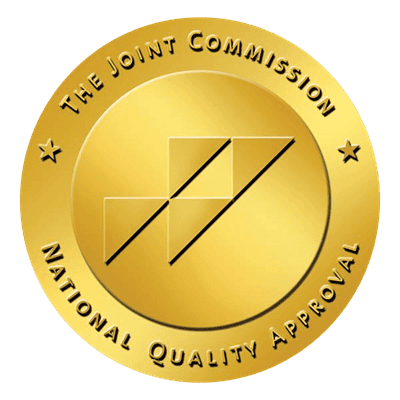Key Takeaways
- Many processed foods contain artificial dyes made from petroleum.
- Dyes like Red 40, Yellow 5, and Blue 1 are linked to mood swings, behavior changes, and increased cravings.
- These food additives may worsen symptoms of eating disorders, especially in teens and young adults.
- Some dyes banned in other countries are still allowed in U.S. foods.
- Understanding food ingredients can help support mental health and recovery from disordered eating.
Introduction
What we eat doesn’t just affect our bodies—it also affects our thoughts, feelings, and behaviors. For people struggling with eating disorders or mental health issues, the foods we choose may play a bigger role than we realize.
One hidden danger in modern diets is petroleum-based artificial food dyes. These are colorful chemicals used to make snacks, drinks, and even medicines look more appealing. But research now shows that these dyes may have negative effects on mood, appetite, and mental well-being.
In this article, we’ll explore what these dyes are, where they’re found, and how they may impact people—especially those dealing with eating disorders and emotional health challenges.
What Are Petroleum-Based Food Dyes?
Artificial food dyes are synthetic color additives made from petroleum, the same oil used to make gasoline and plastic. They are added to foods to make them look brighter or more fun, especially for children and teens.
Some of the most common synthetic dyes include:
- Red 40
- Yellow 5
- Blue 1
- Red 3 (banned in cosmetics but still found in some foods)
Even though the Food and Drug Administration (FDA) has approved these dyes for use in food, many health experts and organizations are raising concerns about their safety.
Where Are These Dyes Found?
These dyes show up in many everyday items. You can find them in:
- Candy and gum
- Breakfast cereals
- Ice cream and baked goods
- Sodas, fruit punches, and sports drinks
- Snack foods like chips and crackers
- Fast food items
- Some children’s vitamins and over-the-counter medications
They’re also used in many ultra-processed foods that are low in nutrition but high in additives. Often, these are foods that people with disordered eating behaviors might crave or binge on during emotional highs and lows.
Health Concerns: The Link Between Artificial Dyes and Behavior
Many parents have long reported that artificial dyes make their kids hyper or moody. Now, science is catching up. According to Science in the Public Interest and other research groups, dyes like Red 40 and Yellow 5 may be linked to:
- Hyperactivity
- Attention problems
- Mood swings
- Irritability
- Anxiety
- Difficulty focusing
These neurobehavioral effects are especially troubling for people already struggling with mental health conditions like ADHD, anxiety, depression, or eating disorders.
In fact, some researchers believe that these dyes may interfere with brain function, causing sudden shifts in energy, mood, and appetite.
How Artificial Dyes May Impact Eating Disorders
People with eating disorders often have a sensitive relationship with food. Their bodies and brains may react more strongly to certain food ingredients, especially those that mess with hunger and mood regulation.
Here’s how petroleum-based dyes may contribute to disordered eating behaviors:
- They may increase cravings for high-sugar, high-fat foods.
- They can create sugar crashes and emotional lows, leading to binge eating.
- They may disrupt signals of hunger and fullness.
- They can affect how people feel emotionally, increasing shame, anxiety, or depression after eating.
Many of the foods that contain artificial dyes are heavily marketed to teens and young adults, who are also more likely to develop eating disorders.
The Role of Red 40, Yellow 5, and Other Common Dyes
Let’s take a closer look at a few of the most widely used synthetic dyes:
Red 40
- Found in soda, candy, and snacks
- Linked to hyperactivity and mood changes
- May cause behavioral problems in sensitive individuals
- Some animal studies suggest a possible link to cancer at high doses
Yellow 5
- Used in drinks, cereals, and baked goods
- May cause allergic reactions, asthma symptoms, or irritability
- Linked to changes in energy and emotional regulation
Red 3
- Banned in cosmetics due to cancer risk
- Still used in foods like cherries, candies, and cake toppings
While these dyes may make food look more exciting, they come with health risks that many people don’t know about.
Environmental Health and Regulatory Concerns
The FDA still allows these dyes in food, but other countries take a stronger stance. For example:
- Red 40, Yellow 5, and Yellow 6 must carry warning labels in the European Union.
- Red 3 has been banned in cosmetics in the U.S., yet it’s still allowed in foods.
Many health organizations, including Science in the Public Interest, are calling for updated research and stricter laws in the U.S. Some are pushing to ban red dyes entirely, especially in foods marketed to children.
Food Dyes in the Recovery Process
For people in eating disorder recovery, clean nutrition matters. Eating simple, whole foods can help the brain and body heal from the damage caused by disordered eating.
Reducing or avoiding artificial dyes can:
- Help balance mood and energy
- Support gut-brain health
- Make it easier to listen to natural hunger and fullness cues
- Reduce emotional eating and binge episodes
Recovery is about more than stopping harmful behaviors—it’s also about rebuilding trust with your body, and that includes being aware of what you eat.
When to Seek Help: Eating Disorders and Co-Occurring Issues
If you or a loved one is showing signs of an eating disorder, it’s important to get help as early as possible. Some warning signs include:
- Fear of gaining weight
- Obsessive thoughts about food or body shape
- Eating in secret
- Binge eating or purging
- Avoiding meals or food groups
- Feeling guilt or shame after eating
Many people with eating disorders also struggle with depression, anxiety, or substance use. A good treatment program will address all of these concerns at once—offering support for both the body and mind.
Conclusion
Artificial food dyes may seem harmless, but they can have real effects on behavior, appetite, and mental health. For those recovering from or at risk for eating disorders, these additives may make the journey even harder.
The good news? Awareness is power. Knowing what’s in your food—and how it affects your health—can help you make better choices and feel more in control.
If you or someone you love is dealing with disordered eating or struggling with food-related emotional issues, help is available.
Call Virtue Recovery Las Vegas at 866-520-2861 today to learn how our personalized programs can support your recovery through nutrition, therapy, and compassionate care.
FAQs About Artificial Food Dyes, Nutrition, and Eating Disorders
What are synthetic food dyes and how are they used in food products?
Synthetic food dyes are artificial food colorings derived from petroleum-based compounds. They are used to enhance the appearance of food products by adding vibrant colors, making them more appealing to consumers.
What potential health risks are associated with artificial food dyes?
Some studies suggest that synthetic food dyes can cause various health issues, including hyperactivity and behavioral problems in some children. Additionally, there are concerns about the long-term effects of certain dyes, such as their potential link to cancer.
How can food dyes affect children with eating disorders?
Research indicates that food dyes could exacerbate problems in some children, potentially leading to increased anxiety or impulsive behavior, which may complicate existing eating disorders or contribute to their development.
What does the ingredient list on food products indicate about synthetic food dyes?
The ingredient list on food products will typically include any artificial food colorings used, such as FD&C Red or Yellow dye. Consumers can check this list to identify the presence of synthetic food dyes in their food.
Are there specific synthetic food dyes that are more controversial than others?
Yes, certain synthetic dyes, such as Blue dye and Citrus Red, have been scrutinized more heavily due to studies linking them to health risks. The Center for Science in the Public Interest has highlighted the potential dangers of these dyes in relation to neurobehavioral effects.
What steps are being taken to protect consumers’ health regarding food dye consumption?
Various organizations, including the Office of Environmental Health Hazard Assessment and the Environmental Working Group, are conducting assessments to evaluate the safety of synthetic food dyes and advocate for stricter regulations to protect consumers’ health from potential hazards.
Can synthetic food dyes cause cancer?
Some synthetic food dyes have been linked to potential cancer risks in animal studies, leading to ongoing debates about their safety in the human food supply. Regulatory agencies continue to assess these dyes for any possible carcinogenic effects.
How can consumers minimize their exposure to artificial food colorings?
Consumers can reduce their exposure to artificial food colorings by choosing whole, unprocessed foods and reading the ingredient lists on packaged food products carefully to avoid those containing synthetic food dyes.
What is the link between synthetic food dyes and neurobehavioral issues?
Research has shown that synthetic food dyes can cause hyperactivity and other neurobehavioral problems in some children, prompting calls for further investigation into the effects of these additives on children’s health and behavior.
Resources
https://pmc.ncbi.nlm.nih.gov/articles/PMC3441937/
https://www.washingtonpost.com/wellness/2025/04/23/artificial-synthetic-petroleum-dye-food-coloring/

